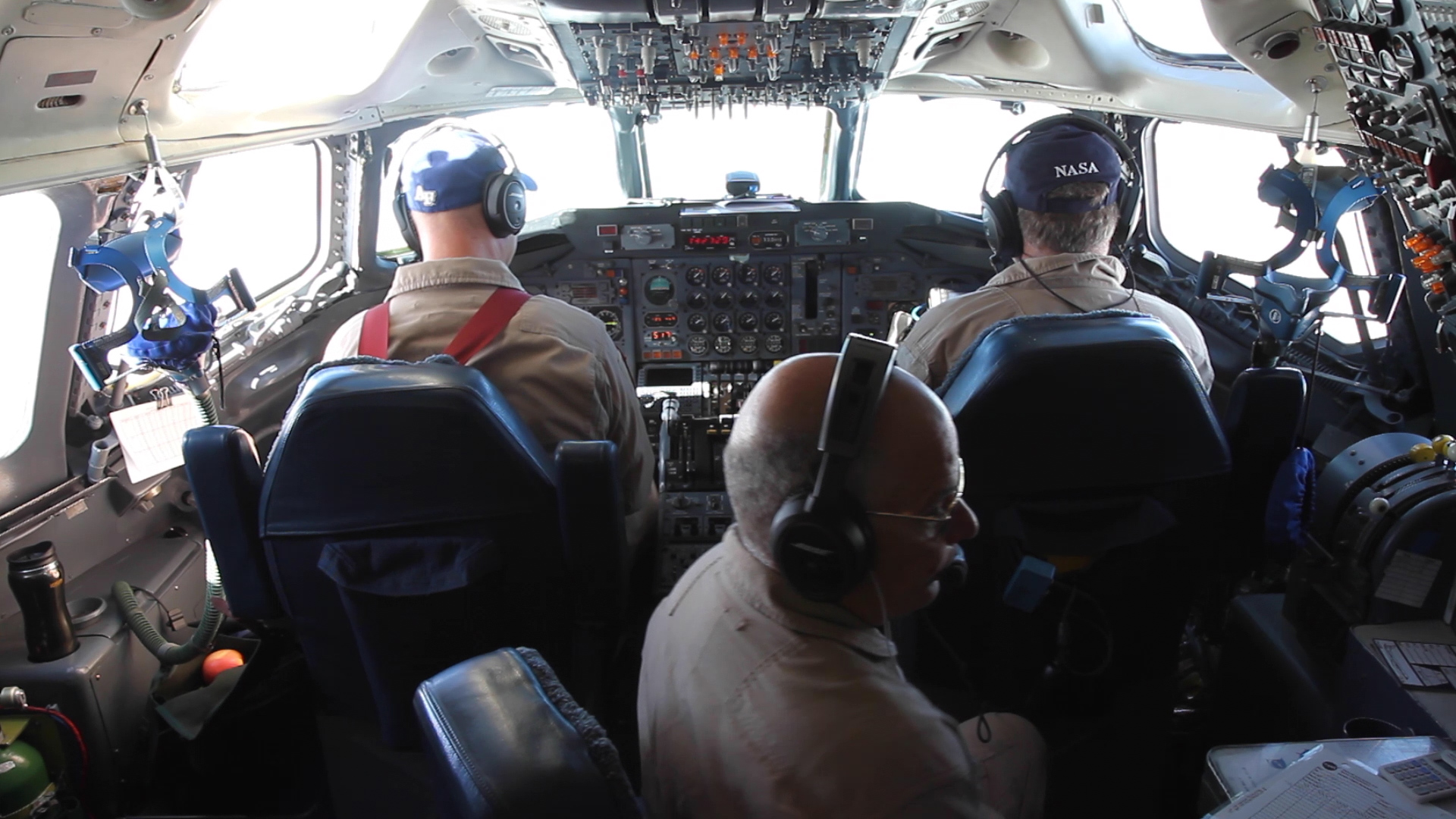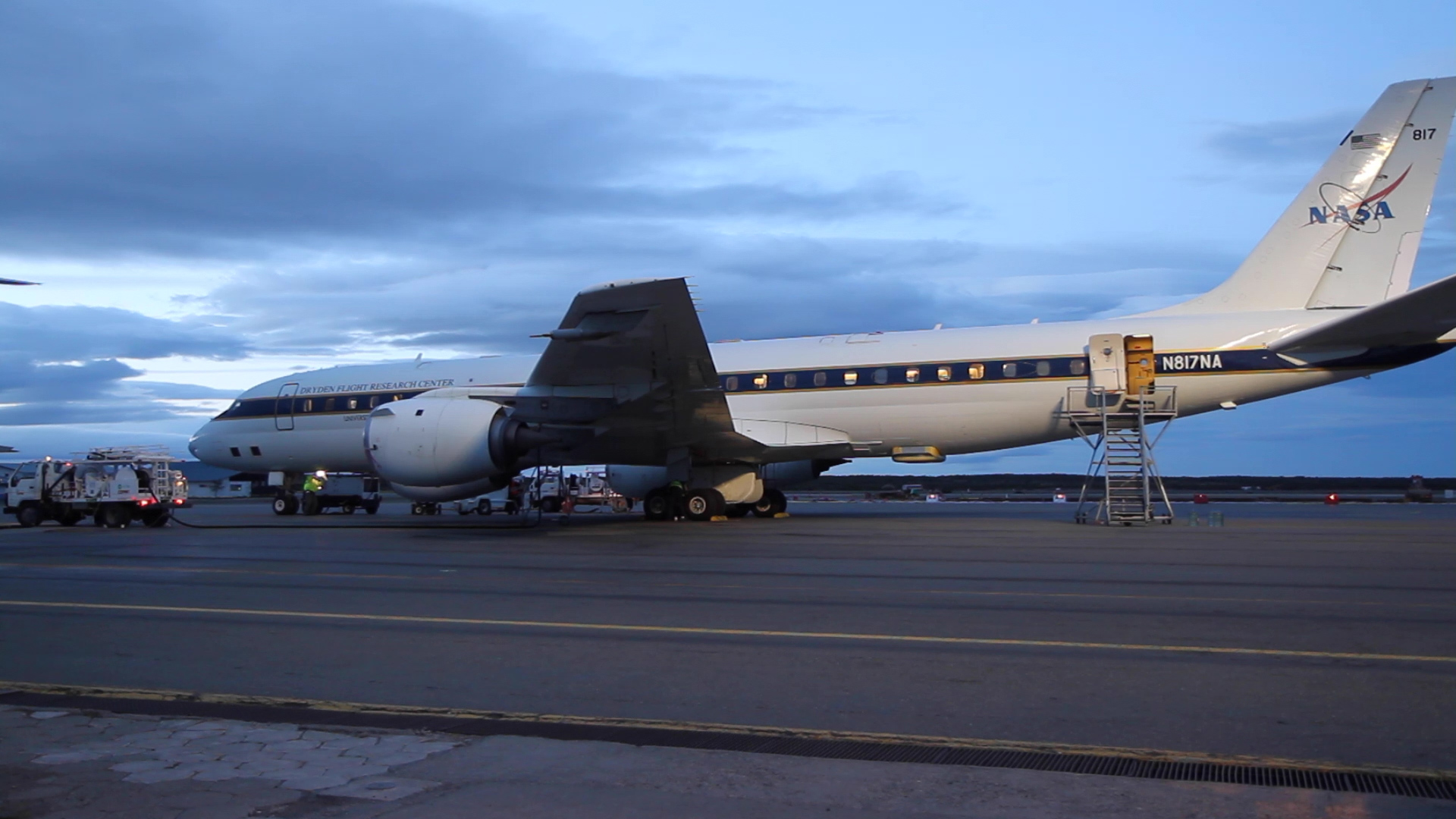Operation IceBridge - Antarctic Campaigns
Land Ice
Witness the Breathtaking Beauty of Earth's Polar Regions with NASA's Operation IceBridge
Go to this pageVIDEO: "Witness the Breathtaking Beauty of Earth’s Polar Regions"Operation IceBridge recorded the diversity and fragility of our rapidly changing polar regions. These areas are some of the most inhospitable, but breathtaking places on Earth. Sit back and witness the polar regions, from western Greenland to Antarctica. Notable features include the Pine Island Glacier, Larsen C ice shelf, and rapid summer melt on the western Greenland Ice Sheet. Learn more: Operation IceBridgeMusic Provided by Universal Production Music: "Arabesque No.1" by Claude Debussy [PD]This video is also available on our YouTube channel. || 13577_Cryosphere_Beauty_Classic.00018_print.jpg (1024x576) [156.8 KB] || 13577_Cryosphere_Beauty_Classic.00018_searchweb.png (320x180) [102.8 KB] || 13577_Cryosphere_Beauty_Classic.00018_web.png (320x180) [102.8 KB] || 13577_Cryosphere_Beauty_Classic.00018_thm.png (80x40) [6.0 KB] || 13577_Cryosphere_Beauty_Classic.mp4 (1920x1080) [240.8 MB] || TWITTER_720_13577_Cryosphere_Beauty_Classic_VX-313147_twitter_720.mp4 (1280x720) [25.0 MB] || 13577_Cryosphere_Beauty_Classic_VX-313147.webm (960x540) [61.6 MB] || 13577_Cryosphere_Beauty_Classic.mov (1920x1080) [1.7 GB] || Cryosphere.en_US.srt [52 bytes] || Cryosphere.en_US.vtt [65 bytes] ||
Operation IceBridge - Pine Island Glacier
Go to this pagePine Island Glacier is one of many outlet glaciers around the perimeter of Antarctica, but observations have shown that this glacier is worth extra attention. It is, along with neighboring Thwaites Glacier, one of the main pathways for ice entering the Amundsen Sea from the West Antarctic Ice Sheet and one the fastest-retreating glaciers in Antarctica. Collectively, the region contains enough vulnerable ice to raise global sea level by 1.2 meters (4 feet).Operation IceBridge routinely surveyed the glacier during its annual missions over the continent. ||
Operation IceBridge - Antarctic Transits
Go to this pageNASA is carrying out its sixth consecutive year of Operation IceBridge research flights over Antarctica in 2014 to study changes in the continent’s ice sheet, glaciers and sea ice. For several weeks, researchers flew aboard NASA’s DC-8 research aircraft out of Punta Arenas, Chile. ||
Operation IceBridge - A68 Ice Island
Go to this pageOperation IceBridge, NASA’s longest-running aerial survey of polar ice, flew over the northern Antarctic Peninsula on Oct. 16, 2018. During the survey, designed to assess changes in the ice height of several glaciers draining into the Larsen A, B and C embayments, IceBridge senior support scientist Jeremy Harbeck spotted a very sharp-angled, tabular iceberg floating among sea ice just off of the Larsen C ice shelf. ||
Operation IceBridge - Antarctic Fissures
Go to this pageIce shelves are the floating parts of ice streams and glaciers, and they buttress the grounded ice behind them; when ice shelves collapse, the ice behind accelerates toward the ocean, where it then adds to sea level rise. ||
Operation IceBridge - Ice Shelf
Go to this pageLarsen C, a floating platform of glacial ice on the east side of the Antarctic Peninsula, is the fourth-largest ice shelf on the coast of Antarctica. ||
Operation IceBridge - Antarctic Icebergs
Go to this pageTabular icebergs float near the Weddell Sea in Antarctica ||
Sea Ice
Operation IceBridge - Antarctic Icebergs
Go to this pageTabular icebergs float near the Weddell Sea in Antarctica ||
Operation IceBridge - Weddell Sea Ice
Go to this pageNOTE: The audio on this clip varies widely and includes loud aircraft noise. We advise turning down/off sound when previewing this item. || 13462_2018_Canon_Misc_Sea_Ice.mov.00_04_09_14.Still001.jpg (1920x1080) [1.0 MB] || 13462_2018_Canon_Misc_Sea_Ice.mov.00_04_09_14.Still001_print.jpg (1024x576) [394.9 KB] || 13462_2018_Canon_Misc_Sea_Ice.mov.00_04_09_14.Still001_searchweb.png (320x180) [119.4 KB] || 13462_2018_Canon_Misc_Sea_Ice.mov.00_04_09_14.Still001_web.png (320x180) [119.4 KB] || 13462_2018_Canon_Misc_Sea_Ice.mov.00_04_09_14.Still001_thm.png (80x40) [6.7 KB] || 13462_2018_Canon_Misc_Sea_Ice.webm (960x540) [89.4 MB] || 13462_2018_Canon_Misc_Sea_Ice.mov (1920x1080) [5.0 GB] || YOUTUBE_1080_13462_2018_Canon_Misc_Sea_Ice_youtube_1080.mp4 (1920x1080) [335.0 MB] ||
Operations
Operation IceBridge - Crew Activity Oboard
Go to this pageNASA's P-3B and DC-8 airborne laboratories have been the workhorses of Operation IceBridge. These aircraft house several sophisticated instruments for measuring snow depth, ice elevation and thickness, surface temperature, bed topography and other characteristics of sea ice, ice sheets and glaciers. ||
Operation IceBridge - Instrument Panels
Go to this pageNASA's P-3B and DC-8 airborne laboratories have been the workhorses of Operation IceBridge. These aircraft house several sophisticated instruments for measuring snow depth, ice elevation and thickness, surface temperature, bed topography and other characteristics of sea ice, ice sheets and glaciers.The airborne laboratories have been joined by other aircraft, such as NASA's C-130 Hercules, King Air B-200 and HU-25C Falcon, the Gulfstream G-V owned by the National Science Foundation and operated by NCAR’s Research Aviation Facility, the University of Texas Institute for Geophysics' (UTIG) chartered Kenn Borek Basler BT-67, and a variety of small planes used by researchers from the University of Alaska-Fairbanks (UAF). These aircraft increase the number of instruments IceBridge can field at one time, greatly expand the geographic area covered and add a higher-altitude perspective on polar ice. ||
Operation IceBridge - Misc Onboard Activity
Go to this pageNASA’s Operation IceBridge images Earth’s polar ice in unprecedented detail to better understand processes that connect the polar regions with the global climate system. IceBridge utilizes a highly specialized fleet of research aircraft and the most sophisticated suite of innovative science instruments ever assembled to characterize annual changes in thickness of sea ice, glaciers, and ice sheets. In addition, IceBridge collects critical data used to predict the response of earth’s polar ice to climate change and resulting sea-level rise.Now, for the first time since its inaugural flights a decade ago, while IceBridge is mapping Greenland’s ice from the air, one of NASA’s newest satellite missions, the Ice, Cloud and land Elevation Satellite-2 (ICESat-2), is simultaneously mapping that ice from space. ||
Operation IceBridge - Antarctic Airborne Topographic Mapper
Go to this pageThe Airborne Topographic Mapper (ATM), developed at NASA Wallops Flight Facility in Wallops Island, Va., is a scanning laser altimeter that measures changes in ice surface elevation. It accomplishes this by reflecting lasers off the ice surface and measuring the time it takes light to return to the aircraft, usually flying between 1000 and 2000 feet above the ground. By combining this timing data with detailed information about the aircraft’s position and attitude from GPS and inertial navigation systems, ATM can measure topography to an accuracy of as small as four inches. By flying ATM over the same swath of ground previously covered by ICESat, researchers can maintain a record of changes.In addition, the precise data from ATM’s navigation system can be fed to pilot displays in the cockpit or even electronically sent to the automatic pilot system, keeping the aircraft aligned with the planned survey track. This keeps the aircraft along the planned ATM survey swath and also benefits the other IceBridge instruments by minimizing aircraft roll and horizontal acceleration. ||
Aircraft
Operation IceBridge - DC8 Aircraft
Go to this pageNASA operates a highly modified Douglas DC-8 jetliner as a flying science laboratory. The aircraft, based at the NASA Armstrong Flight Research Center facility in Palmdale, California, is used to collect data for experiments in support of projects serving the world's scientific community, including Antarctic flights as part of Operation IceBridge. ||
Operation IceBridge - GV Aircraft
Go to this pageNOTE: The audio on this clip varies widely and includes loud aircraft noise. We advise turning down/off sound when previewing this item. || 13442_2011_G5_cockpit.MOV.00_00_06_00.Still001.jpg (1920x1080) [454.2 KB] || 13442_2011_G5_cockpit.MOV.00_00_06_00.Still001_print.jpg (1024x576) [180.7 KB] || 13442_2011_G5_cockpit.MOV.00_00_06_00.Still001_searchweb.png (320x180) [89.1 KB] || 13442_2011_G5_cockpit.MOV.00_00_06_00.Still001_web.png (320x180) [89.1 KB] || 13442_2011_G5_cockpit.MOV.00_00_06_00.Still001_thm.png (80x40) [7.0 KB] || YOUTUBE_1080_13442_2011_G5_cockpit_youtube_1080.mp4 (1920x1080) [22.1 MB] || 13442_2011_G5_cockpit.webm (960x540) [5.7 MB] || 13442_2011_G5_cockpit.MOV (1920x1080) [69.3 MB] ||
Operation IceBridge - P3 Aircraft
Go to this pageThe P-3B aircraft is ideally suited for low altitude heavy lift airborne science missions. The NASA P-3B has a long history of supporting cryosphere studies, and due to the long range of the aircraft, it is able to support ice sheet studies in both the Arctic and Antarctica polar regions.NASA's P-3B is a four-engine turboprop, capable of long duration flights of 8-12 hours and is based out of NASA's Wallops Flight Facility in Wallops Island, VA. It will support the same suite of IceBridge instruments also flown in the IceBridge 2009-2012 Arctic and Antarctic campaigns, with exception of the Land, Vegetation, and Ice Sensor (LVIS), which in Arctic 2012 campaign flew on the NASA's new Falcon aircraft.The P-3B last flew with IceBridge on their 2012 Arctic campaign, during which the aircraft made flights out of both Kangerlussuaq and Thule, Greenland and will once again support IceBridge for the Arctic 2013 campaign ||
![VIDEO: "Witness the Breathtaking Beauty of Earth’s Polar Regions"
Operation IceBridge recorded the diversity and fragility of our rapidly changing polar regions. These areas are some of the most inhospitable, but breathtaking places on Earth. Sit back and witness the polar regions, from western Greenland to Antarctica. Notable features include the Pine Island Glacier, Larsen C ice shelf, and rapid summer melt on the western Greenland Ice Sheet.
Learn more: Operation IceBridge
Music Provided by Universal Production Music: "Arabesque No.1" by Claude Debussy [PD]
This video is also available on our YouTube channel.](/vis/a010000/a013500/a013577/13577_Cryosphere_Beauty_Classic.00018_print.jpg)













